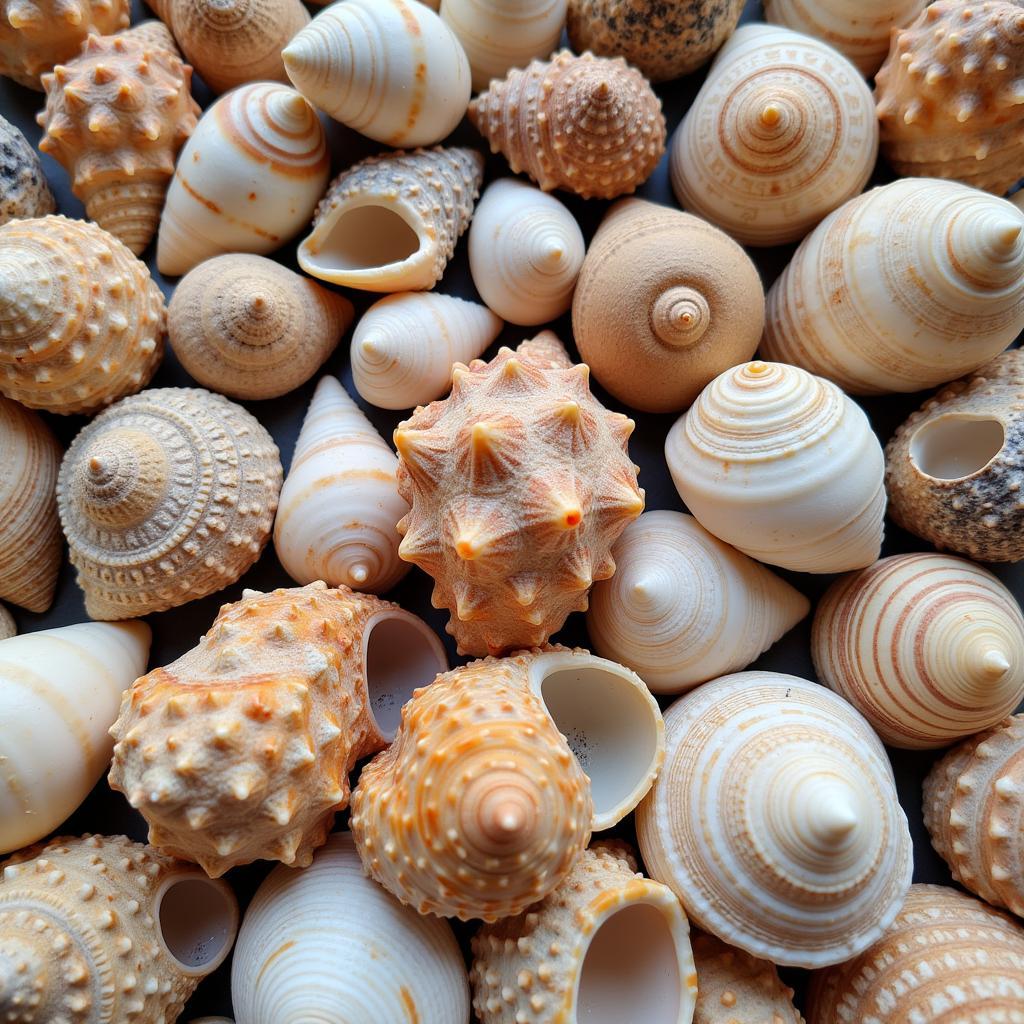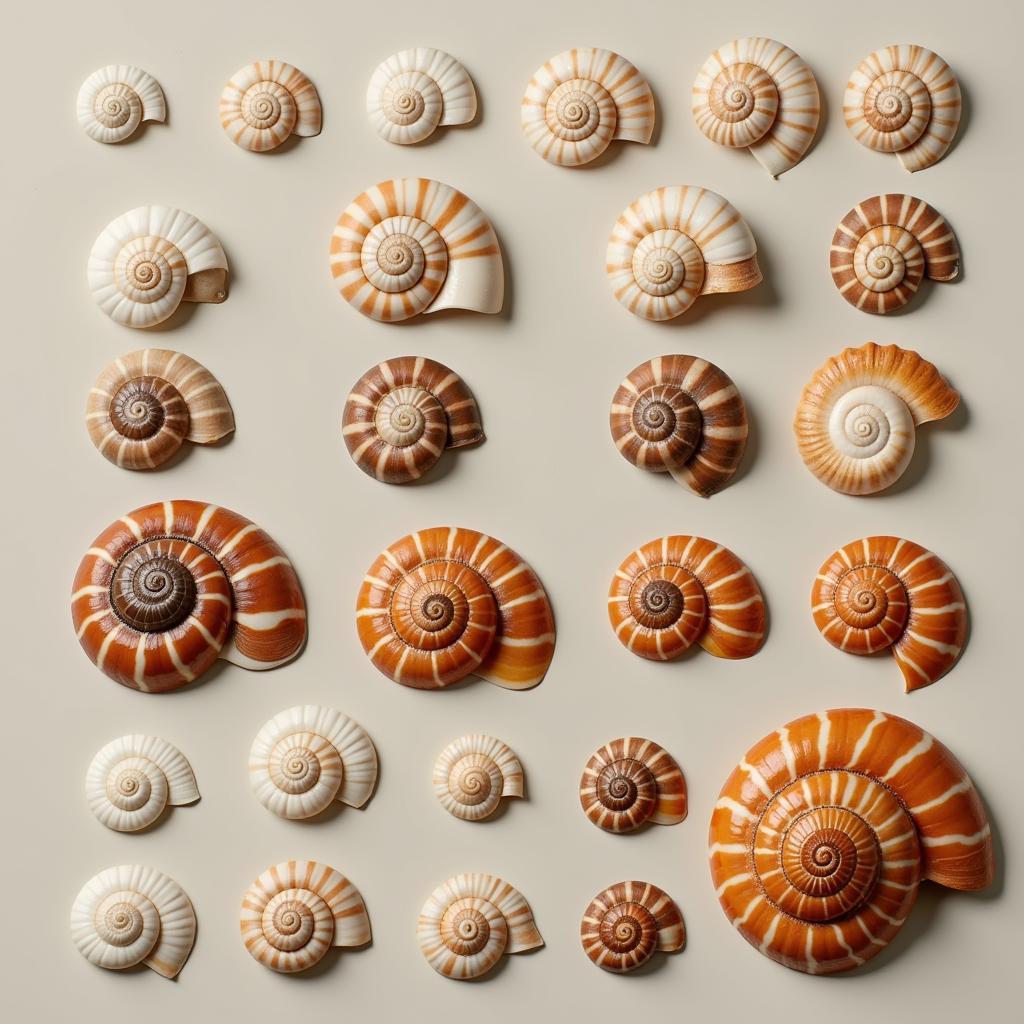Are Asea Shells Dead Clams? This is a common question, and the answer isn’t always straightforward. While some seashells are indeed the remnants of deceased clams, the truth encompasses a wider variety of marine life. Let’s delve into the fascinating world of seashells and uncover their origins, revealing the secrets behind these beautiful treasures washed ashore.
Understanding the Connection Between Seashells and Clams
Are all seashells from clams?
Not all seashells are from clams. While clams are a significant contributor to the world’s seashell population, many other creatures also create shells. These include snails, mussels, oysters, scallops, and even microscopic organisms like foraminifera. Each species builds its shell differently, resulting in the stunning diversity of shapes, sizes, and colors we see. Clams, specifically, belong to a class called Bivalvia, characterized by two hinged shells protecting the soft-bodied creature inside. When the clam dies, the shells often separate and are washed ashore, becoming the seashells we find on beaches.
 Different Types of Seashells
Different Types of Seashells
How do clams create their shells?
Clams, like other shelled mollusks, create their shells through a process called biomineralization. They secrete a mixture of calcium carbonate and proteins from a specialized tissue called the mantle. This mixture hardens into layers, gradually building the shell over time. The shell grows with the clam, adding new layers at the edges. The patterns and colors of the shell are influenced by factors like the clam’s diet, environment, and genetics.
Exploring Different Types of Seashells and Their Inhabitants
Beyond Clams: The World of Gastropods
Gastropods, like snails and conchs, are another significant source of seashells. These creatures have a single, often spiraled shell, offering a mobile home as they glide across the seafloor or climb rocks. Their shells can be incredibly intricate, with beautiful patterns and textures.
 Gastropod Shell Diversity
Gastropod Shell Diversity
The Protective Armor of Bivalves
Bivalves, including clams, mussels, and oysters, are characterized by their two-part hinged shells. These shells protect the soft, vulnerable animal inside from predators and environmental stressors. The diversity within bivalves is vast, showcasing a fascinating array of shell shapes, colors, and textures.
Other Shell-Producing Creatures
Beyond clams and gastropods, other marine creatures contribute to the array of seashells we find. These include brachiopods, chitons, and even certain crustaceans like barnacles. Each group has its unique shell-building process, contributing to the rich tapestry of seashell diversity.
The Life Cycle of a Seashell and its Journey to the Shore
A seashell’s journey begins within the living organism. As the creature grows, so does its shell, adding layer upon layer of calcium carbonate. When the organism dies, the soft parts decompose or are consumed by other organisms. The empty shell is then left at the mercy of currents and tides, often being carried to distant shores.
Conclusion: Appreciating the Beauty and History of Seashells
So, are asea shells dead clams? While some are, many originate from other fascinating marine creatures. Each seashell tells a story of life, growth, and the intricate processes of the ocean. By understanding the origins of these beautiful objects, we can further appreciate the wonders of marine life and the interconnectedness of our planet. Whether you’re a collector, a beachcomber, or simply curious about the natural world, the next time you pick up a seashell, remember the fascinating journey it has taken.
FAQ
- What is the main component of a seashell? Calcium carbonate.
- Are all seashells white? No, they come in a variety of colors and patterns.
- How long does it take for a seashell to form? It depends on the species and environmental factors, but it can take weeks, months, or even years.
- Can you find living creatures inside seashells? Yes, it’s possible to find hermit crabs or other small creatures inhabiting empty shells.
- Why are some seashells smooth and others rough? The texture depends on the species and how the shell is formed.
- What can I do with collected seashells? You can use them for crafts, decoration, or simply admire their beauty.
- Where can I learn more about different types of seashells? Museums, online resources, and books are great places to start.
Need more information about the wonders of Southeast Asia? Contact us at 0369020373, [email protected], or visit us in Bac Giang, Vietnam. Our team is available 24/7 to assist you.

